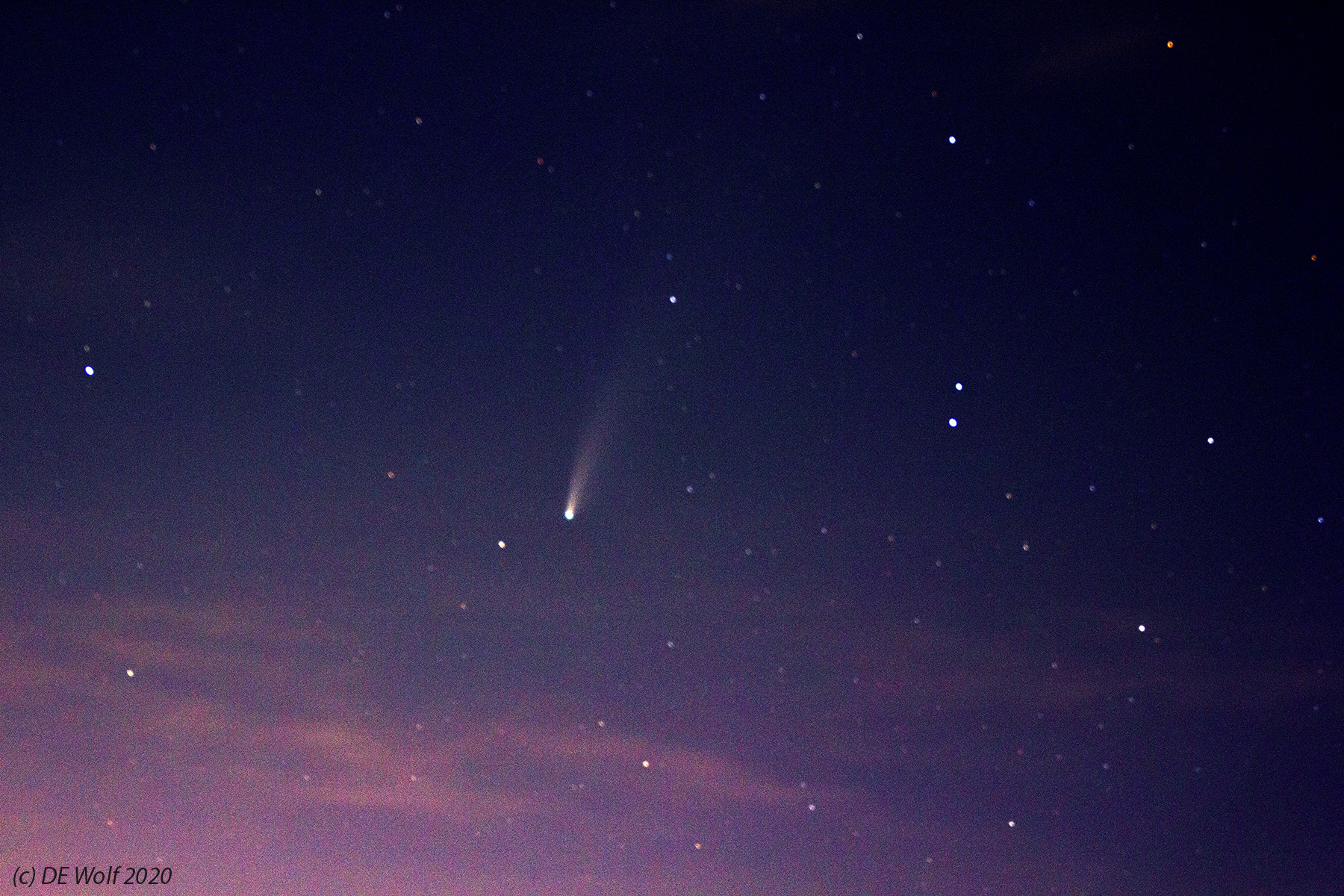
So, not surprisingly, I do have a bit more to say about comets. On July 20, 1963, a very young David was with his father and telescope viewing a solar eclipse in Sullivan County, NY. My passion was ascending to the zenith of science geek-dom. In those days, I would have loved to photograph what I saw – especially the silent, cool, luminescent sights in the late evening or early morning twilight skies. It was time to dream. Fast forward many years to July of 2020, binoculars, telephoto, and tripod in hand I went out to attempt to find comet Neowise 2020 as it approached as if to kiss the Earth.
There were the expected problems. First, was finding it against the background light. Ultimately I could see it both in my binoculars and with the unaided naked eye. Second, was getting my tripod’s camera easy mount to lock in the dark. Third, sighting my camera on it was another story, since I couldn’t see it in the viewfinder. And fourth, there was the dreaded “M” or manual mode. I had preset everything, but my camera refused to shoot, and I finally realized that I needed to turn off the autofocus. So voila friends, here is Neowise, hovering gloriously over the Danvers or North River in Salem, MA. One of my first astrophotographs!
Despite the light pollution, perhaps because of it, this comet evoked all the magic and marvel of comets. There is the bright core and the nebulous and spectacular tail. And there is the sense of wonder and predilection. The David of 2020 thanked this beautiful comet on behalf of himself as well as the boy of 1963.
Discovered on March 27, 2020, by NASA’s NEOWISE (Near-Earth Object Wide-field Infrared Survey Explorer) space telescope, the comet was originally a faint object on the outskirts of our solar system. But as it approached the Sun, it began to brighten, becoming visible to the naked eye. NEOWISE reached its closest point to the Sun on July 3, 2020, and its perihelion (closest approach) sparked a surge in its brightness, transforming it into one of the most spectacular comets to be seen in recent years. The comet sported two distinct tails: a dust tail that appeared white or yellowish, and a gas tail with a bluish hue, created by gases like carbon monoxide and water vapor. This beautiful double tail was best seen in the early morning or evening sky, just before sunrise or after sunset, making it a unique and fleeting sight.
The appearance of Comet NEOWISE was particularly notable because it was the brightest comet visible from the Northern Hemisphere in over two decades. Previous comets like Hale-Bopp in 1997 had captured similar attention, but NEOWISE’s beauty, combined with its accessibility to amateur astronomers and casual observers, created a sense of wonder and excitement. And I would argue it was the first comet of the digital photography age. People around the world, from backyard stargazers to professional astronomers, took to social media, sharing photos of the comet’s dramatic passage across the sky.
By mid-August 2020, Comet NEOWISE had passed beyond the Earth’s view, moving away from the Sun and fading into the depths of space.And truly this is what comets do. They appear out of the inky darkness of space, wax to a splendid fiery glory, and then fade into the void again.
Many, like Neowise 2020 will return again. Neowise 2020 is predicted to return again in 8820. Comets are like great trees in this respect. We plant them as an act of faith in and as a gift to the future.
